Ertach Kernow - Marazion is more than just a view
Marazion is more than just a view, somewhere nice to look from the carpark over Mounts Bay and of St Michael’s Mount, but it’s much more than that. Along with its larger neighbour Penzance it was not an old enough settlement to have been included in Domesday. By 1284 Pensans was mentioned and any one of these small settlements including Mousehole could have grown to be the major port in the area. Soon after Domesday some 1,100 ecclesiastical parishes countrywide were established including the Parish of St Hilary, covering the area to be Marazion and St Michael’s Mount, the Parish of Madron, which took in the Penzance area and Paul encompassing Newlyn and Mousehole districts. These settlements were some distance from their churchtowns, surrounding the early medieval parish churches, Marazion separated by some two miles.
By the 14th century fishing in the Mounts Bay area was an important form of income to the Duchy of Cornwall from its inception in 1337. Based on the number of fishing boats at each of the small ports payments were for Mosehole (Mousehole) five pounds, Marcasion (Marazion) three pounds and Pensanns (Penzance) just 12 shillings. One hundred years later Penzance had become the major ship embarkation point for pilgrims travelling to the shrine of St James of Compostella in northern Spain.
Fairs and markets were important ways for settlements to grow in size and importance. Marazion had held these for some time before other villages in the area, today its name in Kernewek is Marghasyow meaning Thursday Market. There appears to have been two settlements in the area both having markets They were first mentioned around 1200 where one was recorded as Marghasbigan and the second as Marchadyou. Richard Earl of Cornwall made a grant of fairs and markets to the Priory of St Michaels Mount between 1257 and 1272 mentioning the existing ones and directing that those at Marghasbigan should be moved to Marghasyow. Over the centuries the name evolved with many forms and spellings then becoming corrupted and known as Market Jew or Marazion. There is absolutely no connection with the Semitic people or Zion whatsoever, although nearby Penzance had longstanding Jewish communities living here.
Marazion had no natural place to build a port of harbour on the mainland and early fishing boats likely pulled up on the beach there. The community at Marazion then began to build a harbour at St Michaels Mount in 1425 and the church with its usual generosity granted an indulgence to encourage the work. This was not a payment of money but purely a reduction of time in purgatory for work done or goods or money given to build the stone quay there.
Many borough towns revelled in their rights to send representatives to the Westminster Parliament. There were towns, which in reality were villages which up until the Great Reform Act of 1832 continued to be what became known as rotten boroughs. Marazion had sent representatives in early times and then during the Commonwealth period, but residents had requested to be relieved of that right due to the cost involved.
In 1595 Marazion was established as the major town of Mounts Bay and received a Charter of Incorporation as a Borough becoming the first town in Penwith to be granted that honour. Shortly afterwards Marazion managed to avoid the disaster that befell Penzance, Newlyn and Mousehole when they were attacked and burned by a raiding Spanish force. Richard Carew states in his Survey of Cornwall published in 1602 that ‘the Cornish forces, increased in number and amended in heart, encamped themselves on the green near to the town of Markasiew and St Michaels Mount for the defence thereof, and there spent out the night.’ With the burning of Penzance any threat to Marazion from a trading neighbour they thought was laid to rest, but Penzance folk were indefatigable in their efforts to rebuild and gain status. In 1614 Penzance gained their desired Borough Charter along with rights to markets and fairs.
Some folks who despite the growth and establishment of Penzance as the major town in the area by the middle of the 18th century remained protective, maintaining the bay rivalry between Penzance and the St Michael’s Mount Harbour and Marazion. In 1749 a well-meaning person wrote a letter to the London Magazine, saying ‘By inserting the following description of Penzance in Cornwall, which has never had justice done it by any writer I have seen, you’ll oblige. Your constant reader Penzantiensis.’ There followed a very positive description of Penzance. However, the letter had encouraged another writer who upset by other reports about comparison of the depth of water between the harbours at the Mount and Penzance, along with Mounts Bay having adverse qualities as a maritime base, also penned a lengthy letter. He alluded to Mount and Marazion men being smugglers and to this period of time as ‘this trifling mercenary age’ and people as ‘brainless herd of fashion fools who are scandalously indifferent with their country’s interest’. He went on ‘the same time fond of the wines, ragouts, manufactures dress, fopperies etc., of our great rivals in trade the French.’ Nothing to do with Marazion, but perhaps amusing to readers interested in history as a comparison to what some might consider the vapid, vacuous and facile society we see much of today and our own interest in importing cheap imports from the likes of China and Asia.
An early description of the town is given by John Leland during his travels to Cornwall between 1537 and 1543, not perhaps too inspiring. ‘Marhasdeythyou, ys a fischar towne with a market, and standeth fast apon the shore of the bay directly agaynst the foote of S. Michaels Mont northward. Be the west end of the towne ys a lake, or a rivulus, the hedde wherof risith withyn a myle of Lanant north wordde fro Marhesdeythyou. In Marhasdeythyow ys but a poore chapel yn the myddes of the poore town, and a lytle chapel yn the sand nere by the towne toward the Mont.’
The chapel Leland mentions was one dedicated to St Hermes first recorded in 1308. By 1735 this chapel-of-ease to the mother church at St Hilary had become ruinous and was rebuilt later becoming Marazion’s first parish church when the new parish was formed in 1813. In 1861 that church in turn was replaced by the existing building designed by the architect James Piers St Aubyn, a cousin of John St Aubyn, 1st Baron St Levan, of St Michael's Mount. Piers was responsible for a number of church rebuilds throughout Cornwall and elsewhere and had submitted an unexecuted competition design for Truro Cathedral. Marazion church has a number of striking stained-glass windows from the mid-19th century including memorial windows to a number of people and the St Aubyn family. It was listed as a Heritage Category Grade II building by Historic England in 1987. The Non-conformists had a strong presence in Marazion during the 19th century with chapels for the Wesleyan Methodists, United Methodist Free Church, Bible Christians and Baptists. The first Wesleyan chapel was completed in 1813 with the current imposing Grade II listed Gothic designed building completed in 1893.
The wealth brought to Marazion during medieval times by pilgrims visiting the Benedictine Monastery on St Michael’s Mount, an early form of tourism, continues with today’s visitors. Following the Reformation and dissolution of the monasteries income from pilgrims dried up, exacerbating Marazion’s gradual decline as trade moved towards Penzance. However, through to the 19th century the pilchard fishery remained an important part of Marazion’s economy. Mount’s Bay was an ideal pilchard fishing area with shallow water very suitable for seining and the harbour at St Michael’s Mount for bringing the catches onshore. There were a number of mines around the outskirts of Marazion extracting copper and tin until the 1840’s, and the eventual collapse of the Cornish mining industry. Regarding tin, it is believed that Marazion is the place named Ictis, an Iron Age tin port described by 1st century BCE writer Diodorus of Sicily.
Today with a population of about 1,500 people the town supports four public houses including the King’s Arms, said to be one of the oldest brick buildings in Cornwall, and the Cutty Sark a 17th century coaching inn. The town centre is designated a conservation area with many buildings Grade II listed. In the historic Market Square is the 1871 chateau style Town Hall which contains a town museum. There are a number of artist studios, galleries and a wide range of retail establishments.
Some fun info about Marazion was its application for city status in 2021 as part of the late Queens jubilee celebrations. It was long listed as one of 39 potential recipients but sadly had to withdraw not having the support of Cornwall Council. On the bright side it did a great deal for publicity with more people knowing about Marazion, which is rightly proud of its history and quality of building conservation. A fine example of a historic coastal Cornish town and well worth visiting.

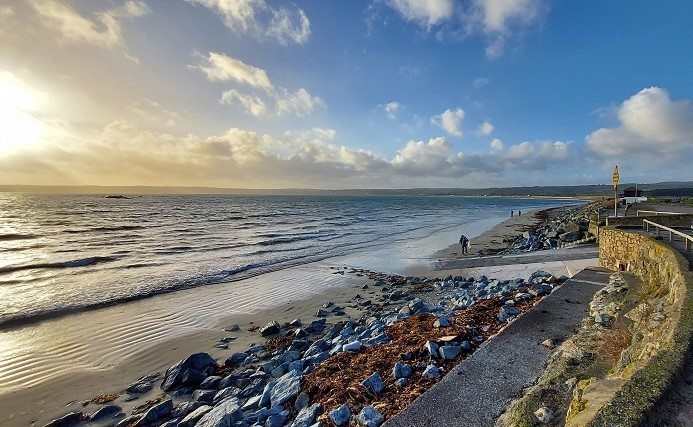
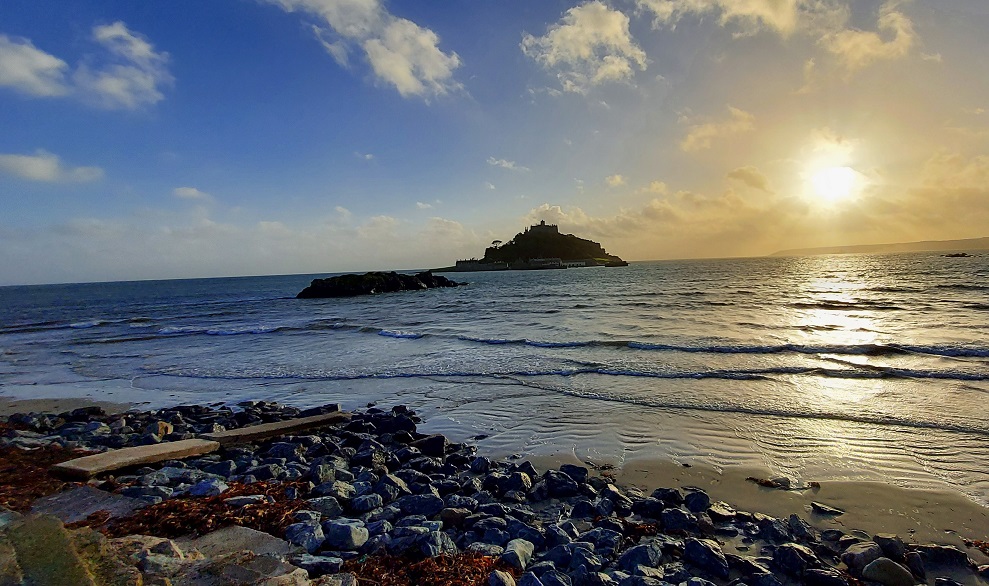
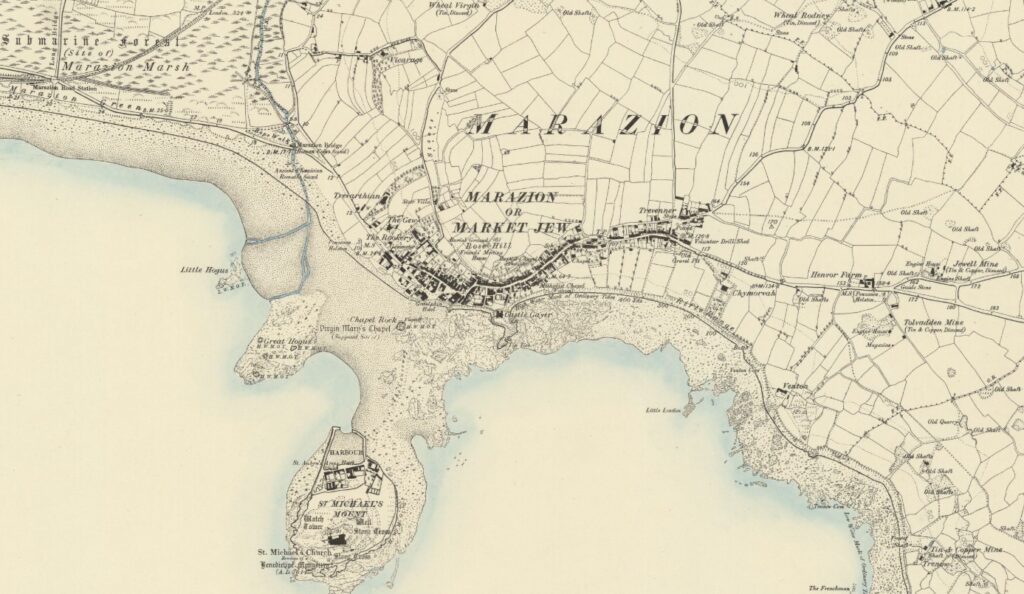
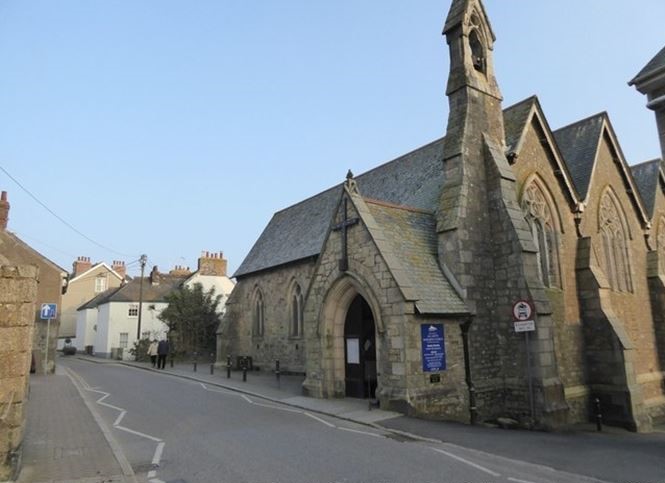
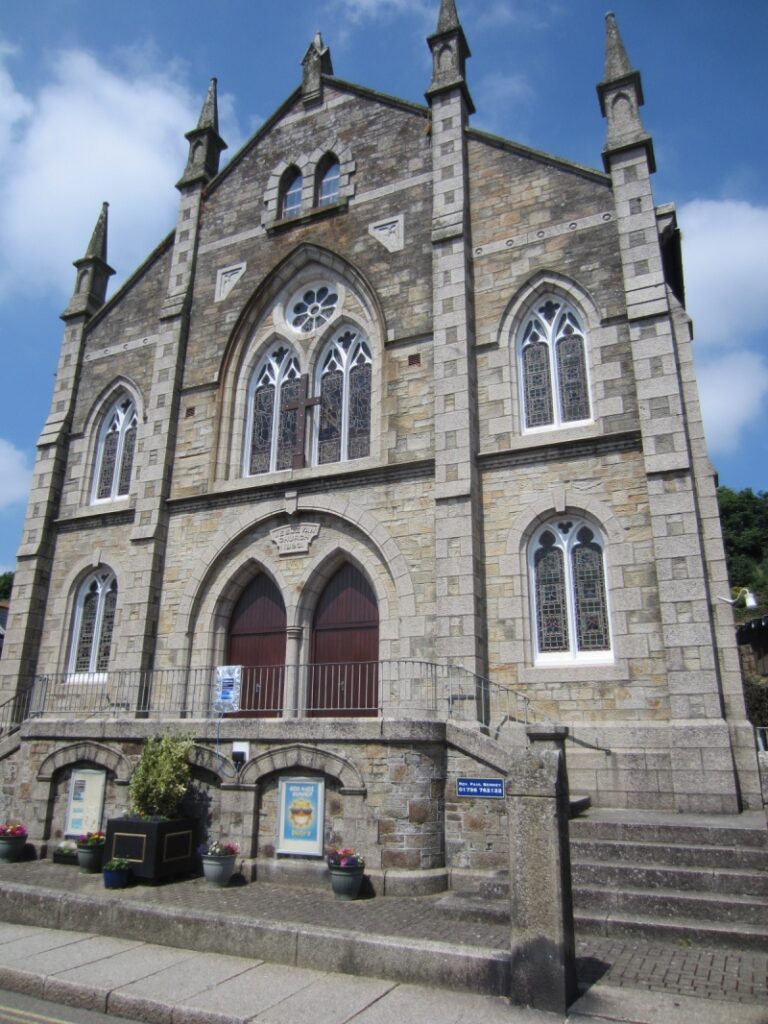
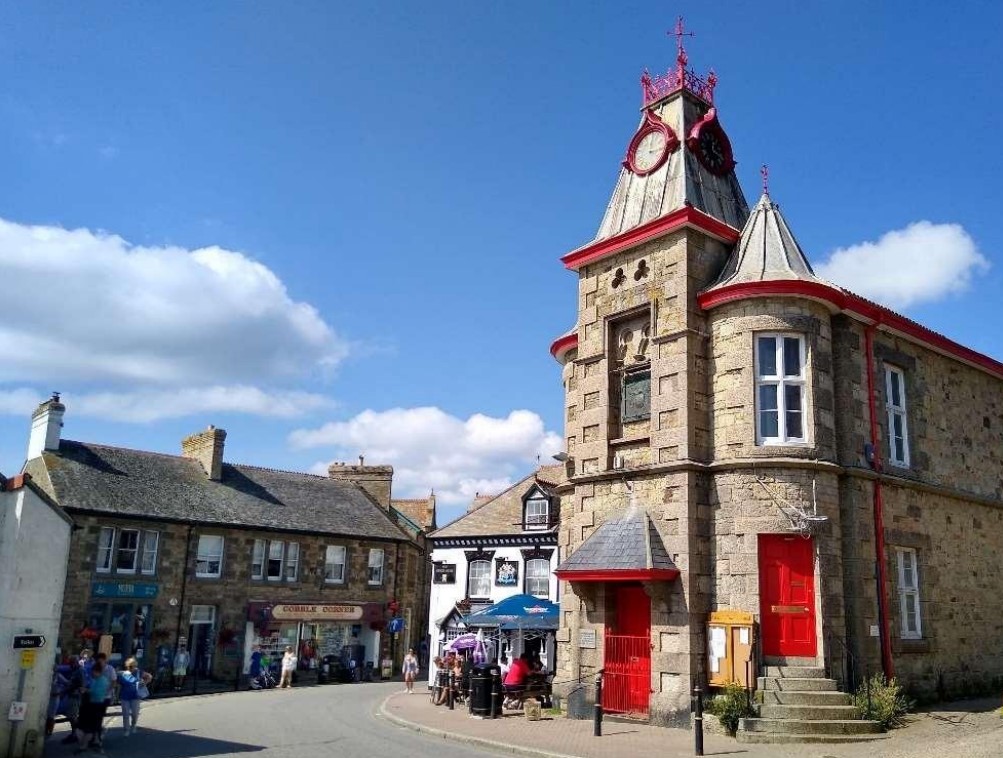
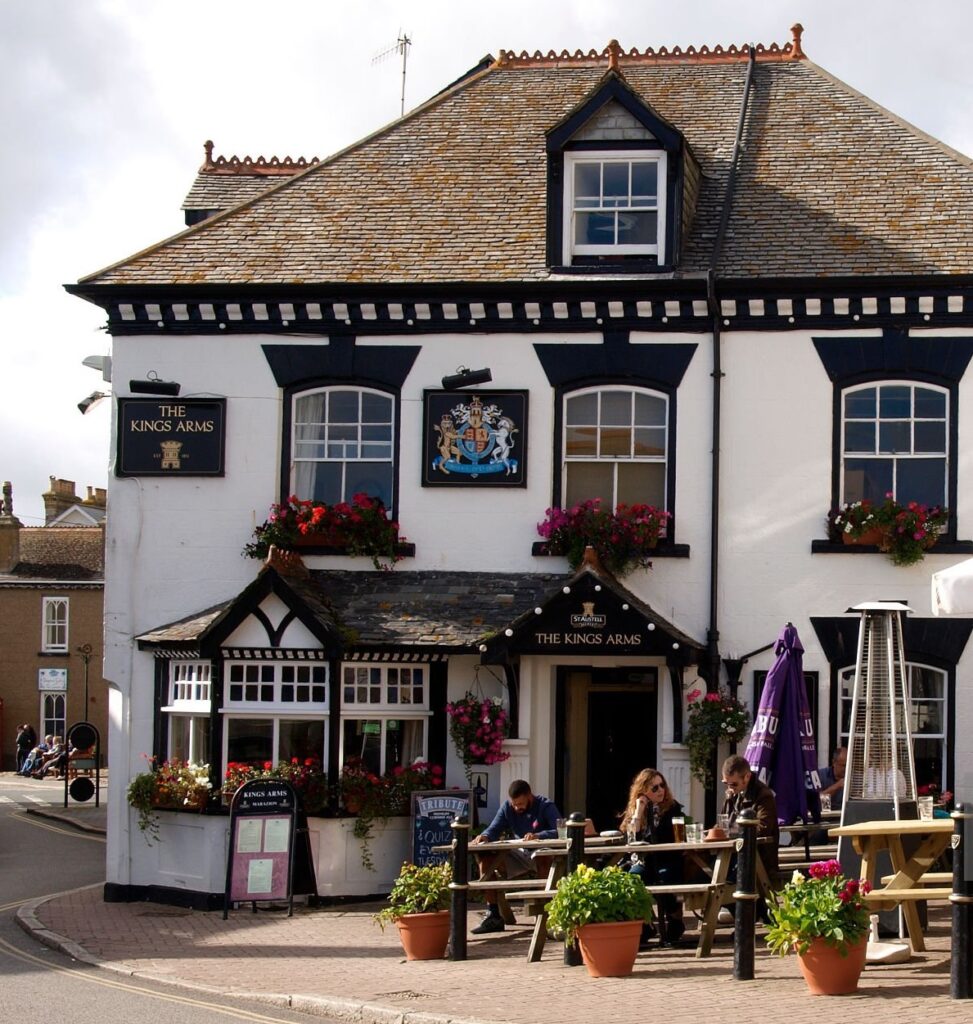
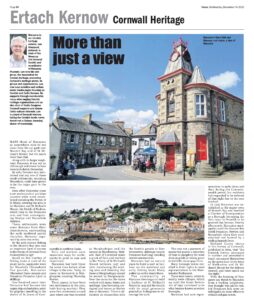
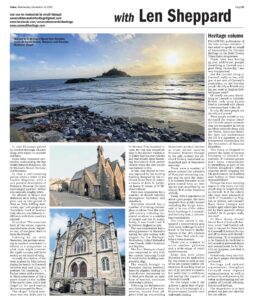
![[129] Ertach Kernow Heritage Column - 14th December 2022 - Where have all the Cornish gone Ertach Kernow Heritage Column - 14th December 2022 - Where have all the Cornish gone?](https://www.cornwallheritage.com/wp-content/uploads/2022/12/129-Ertach-Kernow-Heritage-Column-14th-December-2022-Where-have-all-the-Cornish-gone-273x300.jpg)